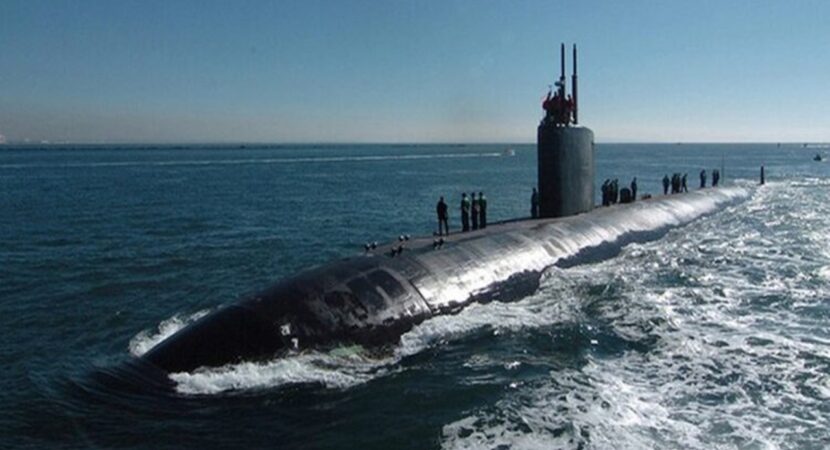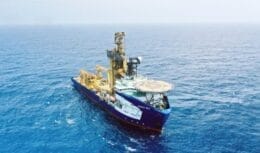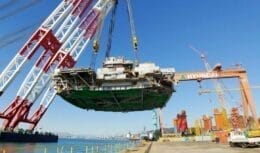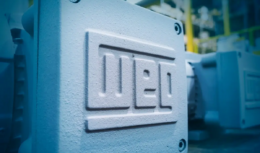
Submarino disappeared on Wednesday with 53 crew on board. The Navy declared the submarine officially sunk, with no hope of finding survivors.
This Saturday (24/04), the Indonesian Navy found wreckage believed to be from the submarine KRI Nanggala 402, of German construction, missing since Wednesday, with 53 crew members on board, in the waters of Bali, involved in military exercises, said the country's military chief this Saturday.
Read also
- Petrobras is obliged to remove the 'submarine warehouse' with tons of equipment and pipes from oil platforms dumped in the Campos Basin
- The Brazilian Navy inaugurated today at the Complexo Naval de Itaguaí (CNI) in Rio de Janeiro, the Madeira Island Submarine Base (BSIM)
- Bradesco invites candidates with no experience looking for their first job throughout Brazil for the Young Apprentice Program
- Multinational shipbuilding industry Wilhelmsen invites you to work on board; job vacancies announced yesterday (21/04)
The Navy thus declared the submarine officially sunk, with no hope of finding survivors. According to the authorities, the oxygen reserves for the crew ended earlier this Saturday.
According to the news Associated Press (AP), Indonesian Navy Chief Yudo Margono said rescuers found various objects from the submarine, including parts of a torpedo straightener, a bottle of grease used to oil the periscope, and prayer mats. “With the evidence that we found to be from the submarine, we have now moved from submergence to sunk,” said Margono.
On Wednesday, the commander of the Indonesian armed forces told the press that he suspected that the submarine could have run aground or else have descended too far, below the limit from which it can be contacted or retrieved — which could be more than 700 km away. meters deep.
Missing KRI Nanggala 402 submarine had capacity for 72 hours of oxygen
On Thursday, Indonesia's navy chief said the missing submarine had a capacity of 72 hours of oxygen.
At a press conference, Yudo Margono also said that the search teams found a source of great magnetism at a depth of between 50 and 100 meters, which could give clues about the location of the submarine.
More than 400 people, as well as five ships and a helicopter, have participated since Wednesday in the search and rescue of the KRI Nanggala-402 submarine, manufactured in Germany in 1977.
The submarine disappeared after losing contact with the ship at the end of exercises off Bali.
A spokesman for the Navy confirmed that the submarine KRI Nanggala 402 did not make contact after the military exercises in which it was involved. “It is true that the submarine lost contact after 03:19 (XNUMX:XNUMX on Tuesday in Portugal)”, said Admiral Julius Widjojono. The military said that, despite extensive knowledge of the area, the seabed is very deep in the archipelago of Bali, something that made searches difficult.
Several countries, such as Australia, Singapore and the US, helped with the searches
Several countries, such as Australia, Singapore and the US, were involved in the searches. Indonesian military spokesman Djawara Whimbo said on Saturday that the country's hydrographic vessel had not yet been able to detect an unidentified object with high magnetism, which was detected at a depth of 50 to 100 meters.
Searches found no sign of the submarine, but family members were hopeful that the massive search effort would find the vessel in time. Searches focused on an area close to the submarine's last known position, where a fuel slick was found. There was, however, no conclusive evidence that the stain was a signal from the submarine.
Other tragedies involving other submarines
The disappearance of the KRI Nanggala-402 finds parallels with other submarine disasters in history. Just like the disasters with the Kursk, in 2000, and with the San Juan, in 2017, there is the affliction of rescuing the crew while the submarine may have survivors.
/s.glbimg.com/jo/g1/f/original/2018/11/17/submarino-ara-san-juan.jpg)
Country: Argentina; Disaster location: South Atlantic, 600 km from Comodoro Rivadavia, Argentina; Reason: implosion; Number of victims: 44
The ARA San Juan disappeared on November 15, 2017, when returning from the port of Ushuaia, where it had carried out military exercises for the naval base in Mar del Plata. The submarine was found a year later, more than 900 meters deep.
Hours before the disappearance, the commander had warned of a failure caused by the entry of water through a ventilation duct, which leaked into the electrical battery compartment and started the fire.
Although the Argentine Navy has assured, on several occasions, that this fault was “corrected” and that the San Juan continued sailing to Mar del Plata, what is certain is that its trail was lost and never reached the port of that city, where it should have docked. on November 19, 2017.
Kursk (2000)
/i.s3.glbimg.com/v1/AUTH_59edd422c0c84a879bd37670ae4f538a/internal_photos/bs/2018/k/b/8lA12HSe6AMGDKzEevCQ/ap17326212089403.jpg)
Country: Russia; Disaster location: Barents Sea (northwestern Russia); Reason: explosion of a torpedo
Number of victims: 118.
Considered a pride of the Russian Navy, the Kursk set sail from Murmansk, in the far north of Russia, on August 10, 2000. The submarine was equipped with 24 Granit cruise missiles and considered indestructible by Russian sailors.
The explosion occurred in a missile chamber during a maneuver in the Barrets Sea, two days after the Kursk sailed. Of the 118 crew, 23 survived the explosion and were awaiting rescue, but later died. Russian forces released letters written by this group, which reported the most tense moments of the wait, when these crew members had little hope of returning to the surface alive.
The Kursk was located at a depth of 108 meters in the early hours of August 13, when it was still possible to save the 23 crew members. The Kremlin, however, only approved the international rescue operation a week after the accident.
As it turned out later, the military leadership hid the true dimensions of the catastrophe and refused offers from other countries for help to rescue the submarine's crew, who did not initially die in the explosion.
Admiral Gennady Suchkov — after a judgment considered by the press as “unfair” —, and 14 other officers of the Russian Navy were chosen as a “scapegoat” and expelled from active service in the corporation.
Nerpa (2008); Country: Russia; Disaster location: Sea of Japan; Reason: gas leak; Number of victims: 20
On November 8, 2008, in the Pacific Ocean, 20 people aboard the Russian submarine "Nerpa" died of asphyxiation after inhaling freon gas, released by the fire system, activated by mistake.
The accident took place in the Sea of Japan, where the K-152 “Nerpa” was being tested before being leased by India. More than 200 people were on board in a planned surface area of 80.
Among the casualties were 17 civilians from the shipyard where the nuclear-powered attack submarine had just been built.
Komsomolets (1989); Country: Soviet Union; Disaster location: Barents Sea, 500 km off the coast of Norway; Reason: fire; Number of victims: 42
On April 7, 1989, a short circuit caused a fire aboard the Komsomolets, a nuclear-powered attack submarine with a titanium hull that was sailing in international waters, 500 km from the Norwegian coast. Considered a pride of the Soviet navy, the submarine called “Mike” was equipped with missiles with nuclear warheads.
After activating the emergency emergence procedure, the submarine, 110 meters long, reached the surface and several dozen crew members managed to leave the ship, in flames, throwing themselves into the glacial waters. Forty-two sailors died and 27 were rescued.












I'm blocking your website on Google because...
Wonderful! I want it👏👏👏👏
Since the beginning of the presidential campaign, when…
That depends, if you have the money to…
This is Bozo FDP's thing
The country that spends on aircraft carriers…
Paying 119K to drive in an Altinho car,…
Cool! This means that you…